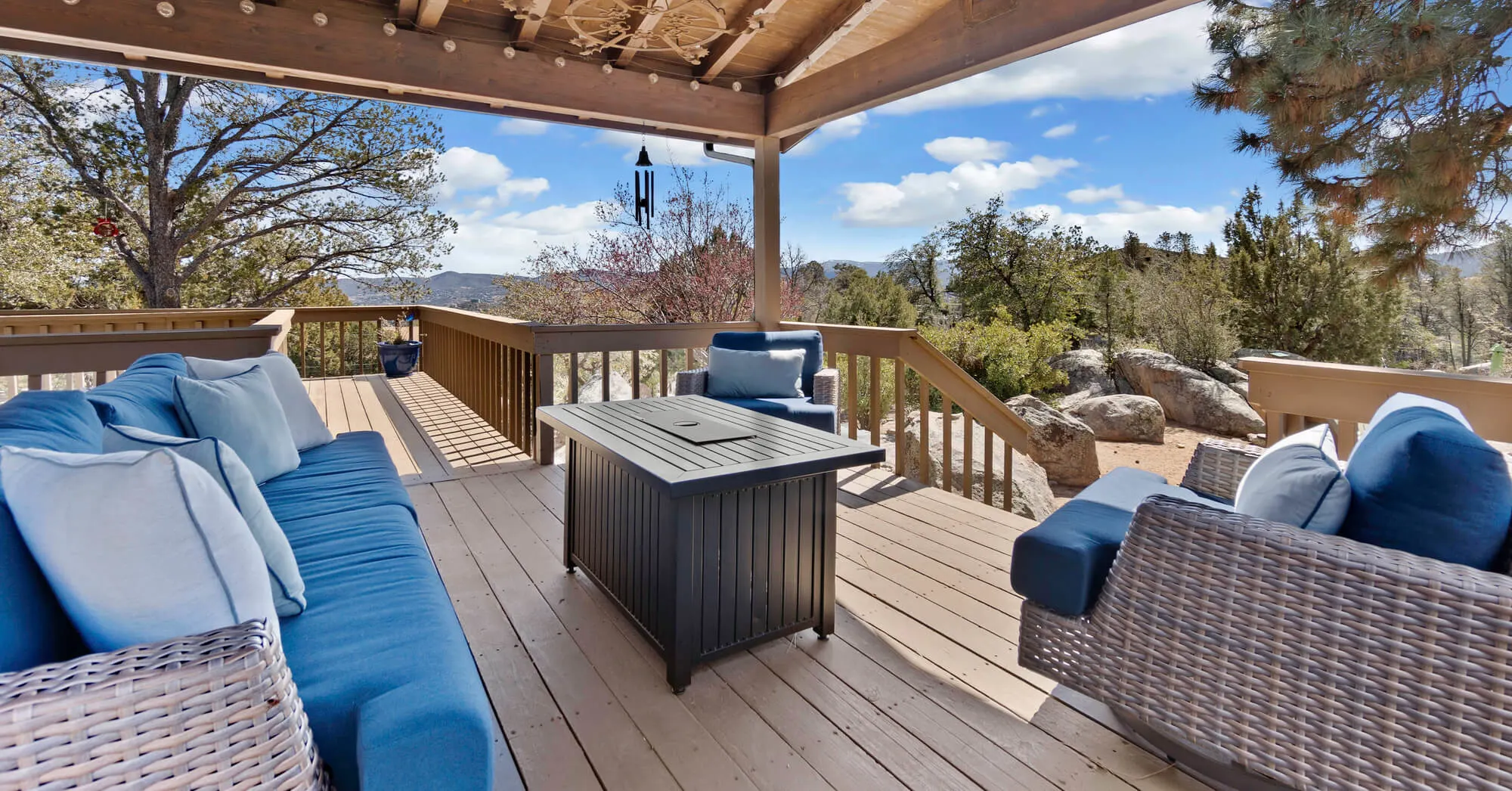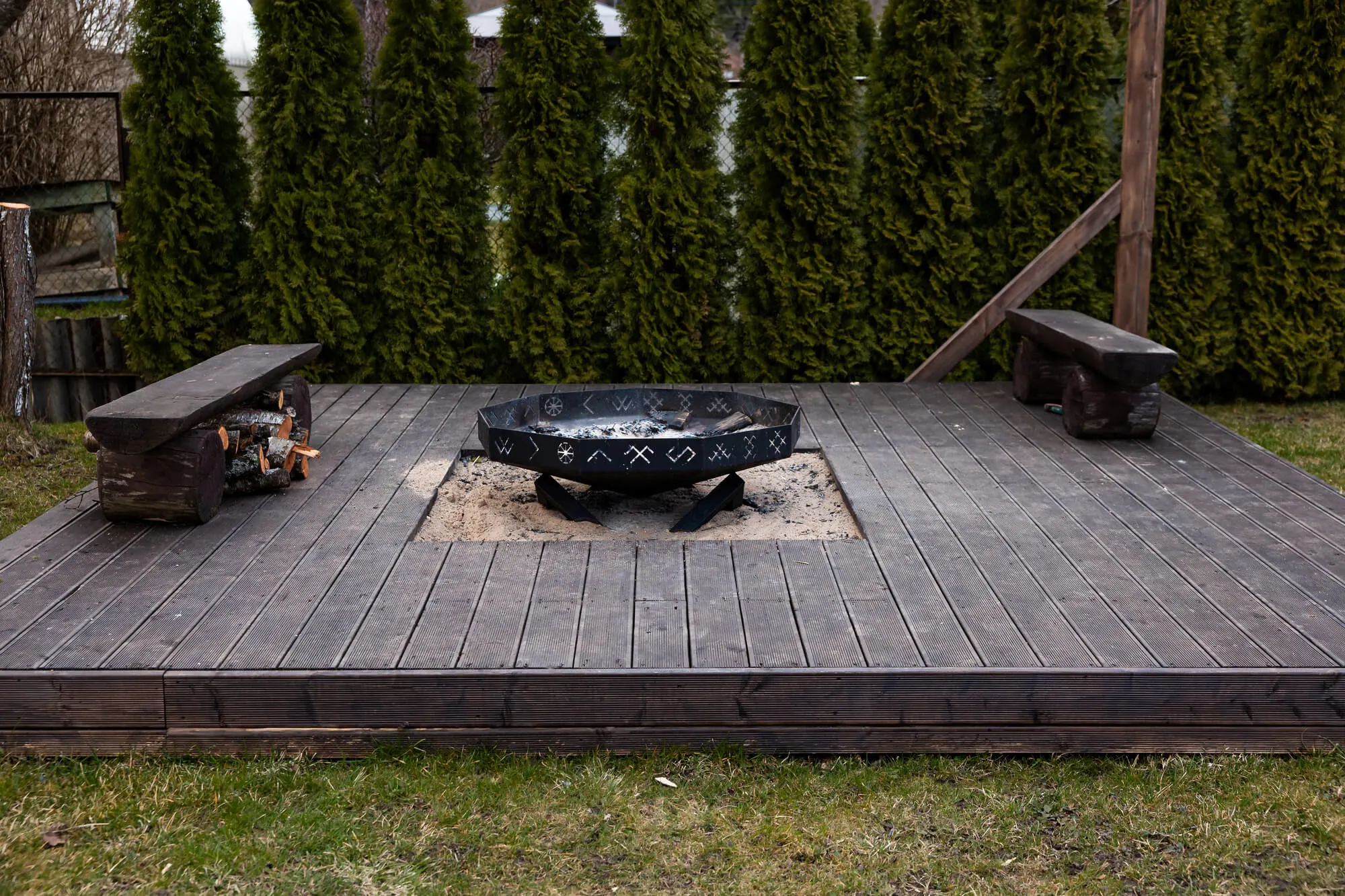
How to Prepare Your Outdoor Furniture for Winter
Winter may bring cozy nights by the fireplace and hot cocoa, but for your outdoor furniture, it’s a season full of potential hazards. Ice, rain, and cold temperatures can take a serious toll on your patio, deck, or garden pieces if they aren’t prepared properly.
With a little planning and care, you can protect your outdoor living furniture in Jupiter and ensure it looks fresh and inviting when spring rolls around.

1. Assess Your Outdoor Furniture
Before you grab your cleaning supplies or covers, take a few minutes to inspect your furniture. It's your chance to spot any existing damage that could worsen over the winter.
Check for Damage
Look closely for cracks in wood, loose screws, rust spots on metal, or fraying wicker. Small issues now can turn into costly repairs later if left untreated.
Prioritize Vulnerable Pieces
Some furniture is more sensitive to cold and moisture. Wood and wicker are particularly prone to cracking and warping, while metal can rust if it isn’t protected. Identify the pieces that need extra attention so you can give them the care they deserve.
Separate Materials
Each type of furniture, be it wood, metal, wicker, or plastic, requires a different approach. Keeping materials separated makes it easier to follow the right winter prep method and prevents mistakes like using harsh cleaners on delicate wood.
2. Clean Your Furniture Thoroughly
You might think a quick sweep or hose-down is enough, but winter prep calls for a more thorough clean. Dirt, leaves, and pollen left on furniture can trap moisture, leading to mold, mildew, and corrosion.
Remove Dirt and Debris
Use a soft brush or cloth to sweep away leaves, dirt, and dust. Don’t forget the nooks and crannies, especially on wicker or slatted furniture.
Wash with Appropriate Cleaners
- Wood: Mild soap and water usually do the trick. Avoid harsh chemicals that can strip protective oils.
- Metal: Use an anti-rust cleaner if you notice any rust spots. A gentle scrub will remove surface dirt without damaging the finish.
- Wicker: A soft brush or even a vacuum can remove dirt from the weave.
Rinse and Dry
After cleaning, give everything a good rinse and make sure the furniture is completely dry. Moisture left behind is a winter enemy; it can freeze, warp, or cause mold.
3. Apply Protective Treatments
Next, it’s time to shield your furniture from winter’s worst. Different materials benefit from different treatments:
Wood Furniture
Teak and other hardwoods stay protected with a layer of teak oil or sealant, which prevents cracking and drying while preserving their natural luster.
Metal Furniture
Protect against rust by applying a thin layer of rust-resistant spray or touching up any chipped paint. Even a small exposed spot can expand into a bigger problem during winter.
Fabric Cushions
Many outdoor cushions are designed to resist water, but extra protection never hurts. Water-repellent sprays help prevent moisture absorption. If possible, bring cushions indoors to avoid freezing and mildew.
Plastic Furniture
Yes, even plastic can fade or become brittle. UV protectant sprays can help prevent color loss and cracking, keeping pieces looking new.

4. Store Furniture Properly
Where your furniture “lives” during the winter can make all the difference. You have two main options: indoor or outdoor storage.
Indoor Storage Options
A garage, shed, or basement can provide shelter from snow and ice. Make sure the area is dry and has good ventilation. Avoid piling items on top of each other and give each piece some breathing room.
Outdoor Storage Tips
If indoor storage isn’t an option, outdoor covers are essential. Elevate furniture off the ground using blocks or pallets to avoid contact with wet surfaces. It prevents moisture from seeping in and protects legs and frames from rot or rust.
Disassemble if Possible
Take apart pieces that allow it. Tables, chairs, and modular sets are easier to cover and store when broken down, reducing the risk of damage during heavy snow or wind.
5. Use Covers Strategically
Even the sturdiest furniture can benefit from a well-fitted winter cover. The right cover keeps ice, rain, and debris at bay while still allowing airflow to prevent mold.
Choosing the Right Covers
Look for breathable, waterproof, and fitted covers. Avoid cheap tarps that trap moisture and can scratch surfaces.
Proper Covering Technique
Don’t just throw a cover over your furniture. Secure it tightly to avoid flapping in the wind but avoid crushing cushions or delicate pieces.
Check Periodically
Winter can be unpredictable. Every month or so, peek under the covers to ensure moisture isn’t trapped and nothing has shifted. This small habit can prevent bigger headaches come spring.
6. Final Tips for Winter Care
A few extra steps can make your winter prep even more effective and help your furniture last for years:
Rotate Furniture Occasionally
If your furniture is stored outside, periodically moving pieces around can prevent uneven wear, sagging, or pressure points on the frames.
Rotating chairs, tables, and benches ensures that the weight is distributed evenly and reduces the risk of permanent dents or warping from prolonged pressure.
Plan a Spring Check-Up
Before bringing your furniture back out in spring, give each piece a thorough inspection. Look for cracks, rust, or signs of wear that might have developed during winter.
Clean surfaces again and reapply protective oils, sealants, or sprays as needed. This step ensures your furniture is ready for the new season and helps maintain its appearance and durability.
Protect Moving Parts and Hardware
Apply a light coat of lubricant to hinges, wheels, or other moving parts to prevent rusting or freezing. Check screws, bolts, and joints for tightness and tighten as needed. It’ll save a lot of effort when it’s time to set up your furniture again.
Consider Preventative Pest Measures
Winter can drive small animals or insects to seek shelter in outdoor furniture. Before covering or storing, check for nests, webs, or signs of pests.
Sealing gaps and ensuring proper ventilation in covered furniture can prevent damage caused by unwanted visitors.

Protect and Elevate Your Outdoor Living Furniture in Jupiter
Prepare your patio, deck, or garden for winter with Caribe Home’s premium pieces. Our experts can also guide you in choosing, protecting, and arranging furniture that stays beautiful year-round. Contact us to visit our showroom!
Design Services
We offer on-site visits as part of the experience, to bring expert advice and style suggestions directly to you. We'll help you shape a personalized design plan for your outdoor space that feels elevated, inviting, and a style all your own.

.webp)
.webp)
.webp)
.webp)
